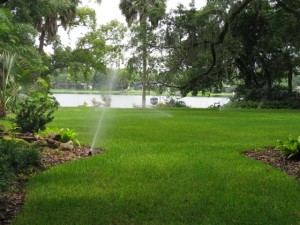 Thank you for visiting the Hessenauer Sprinkler Repair and Irrigation blog and website. We try to provide our website visitors with news, tips and advice concerning sprinkler irrigation and drainage. With autumn soon approaching, we would like to offer some advice concerning possible actions for this upcoming season. Enjoy these autumn lawn preservation tips for a lush, green, healthy lawn all year long.
Thank you for visiting the Hessenauer Sprinkler Repair and Irrigation blog and website. We try to provide our website visitors with news, tips and advice concerning sprinkler irrigation and drainage. With autumn soon approaching, we would like to offer some advice concerning possible actions for this upcoming season. Enjoy these autumn lawn preservation tips for a lush, green, healthy lawn all year long.
Temperature and climate are largely based upon location in relation to the equator. This means, obviously, if you are in the United States, the farther south would indicate generally warmer weather. Take advantage of the cool fall weather to fertilize, control weeds, and improve the health and appearance of your yard. Here are some points to consider for actions to take during the fall.
Water on schedule. Lawns need water whenever it’s dry, regardless of season. If the heat of summer lingers into the fall, water once or twice per week, enough to soak the soil several inches deep. Early morning is a great time of day to water since winds are lighter therefore losing less water to evaporation. Watering in the evening actually encourages fungal diseases.
Fertilize. Fall is a great time to fertilize if you live in the North. Bluegrass, fescue and ryegrass are cool-season grasses that respond well to feeding in early September and again in late October and November. It helps them green up earlier and look better in spring. Avoid fertilizing dormant warm-season grasses in the South unless they have been overseeded with winter ryegrass.
Remove weeds. Dandelions, clover, and other broadleaf weeds are easy to spot in spring, but fall is the best time to rid your yard of these pests. Sprays work best on days with moderate temperatures and when the soil is moist.
Repair Dead Patches. Early fall is a perfect time to reseed small dead or thin patches in cool-season lawns. When you seed in the fall you will have fewer weeds and seedlings become established before hot weather conditions return.
Lay sod. The fall is a great time to begin a new lawn or patch existing areas with sod. Moderate temperatures and abundant moisture get sod off to a quick start. High-quality sod will be thick, dense, and weed-free. It’s a convenient way to get an instant solution to bare spots.
Check for Thatch. Thatch is a layer of dead organic matter mixed with living plant parts which can lead to disease and insect infestations. Thatch could develop when the lawn is overfertilized or watered too frequently. Remove a plug of grass and soil to check for thatch. One inch or less of thatch is not a problem, but if there is more, your lawn may be ready for a thatch management program.
Aerate. Aeration can reduce thatch, improve drainage and and loosen soil. Be sure that the aerator you use pulls plugs of soil from the turf rather than simply punching holes in the ground, which actually increases compaction over time. Aerate cool-season grasses in early fall and warm-season grasses in spring.
Remove fallen leaves. Rake or mulch fallen leaves with a mower before they mat down and smother your grass. A mulching mower works well to shred small amounts of leaves and returns the shredded organic matter to the soil, much like top dressing. When many leaves are present, rake them off the lawn and compost them.
Thank you again for visiting the Hessenauer Sprinkler Repair and Irrigation blog and website. If you have sprinkler irrigation or drainage issues to discuss here in Orlando and Central Florida, contact us at 407-302-2227 today!
